Over the years I’ve photographed a number of small blue dayflowers. Most of the ones I’ve seen have been the Asiatic Dayflowers (commelina communis). I did find a few Erect Dayflowers (commelina erecta) in Texas a couple of years ago.
Once you’ve seen a dayflower – they are easy to recognize. The most commonly seen ones in the eastern US are the Asiatic Dayflowers. Native to East and Southeast Asia, Asiatic Dayflowers were introduced in both the United States and Europe – where in many places it has become an invasive weed.
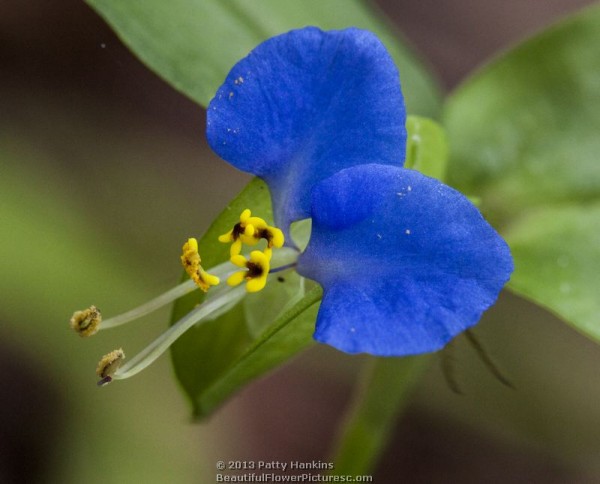
© 2013 Patty Hankins
The Asiatic dayflowers have two large blue petals, and group of yellow staminodes. There is also a smaller white petal hidden behind the staminodes. A pair of stamens hang down at the bottom of the flower. The flowers grow to about an inch in size.
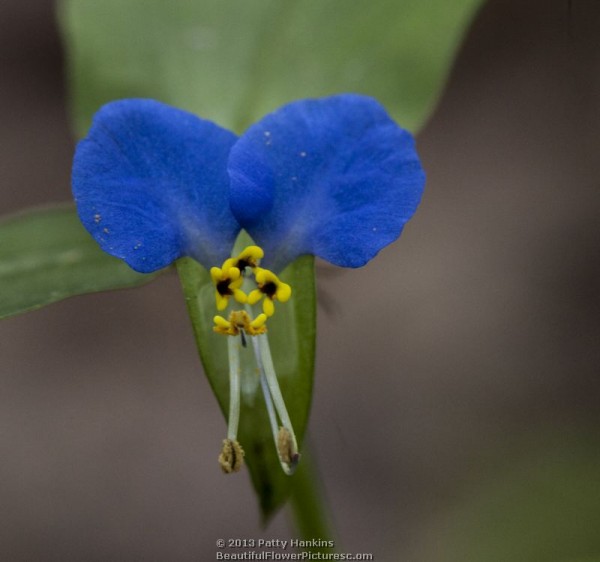
© 2013 Patty Hankins
The Erect Dayflowers (commelina erecta) are a variety of dayflowers native to the United States. While their native range was originally limited to an area ranging from Florida to New Mexico to South Dakota to New Jersey – they now can be found throughout the U.S. with the exception of the far western states.
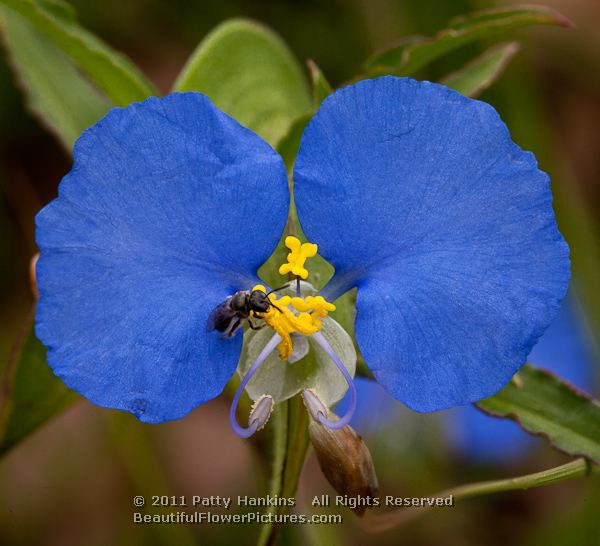
© 2011 Patty Hankins
The flowers on the Erect Dayflowers are very similar to those of the Asiatic dayflowers. The white lower petal is often easier to see on the Erect Dayflowers.
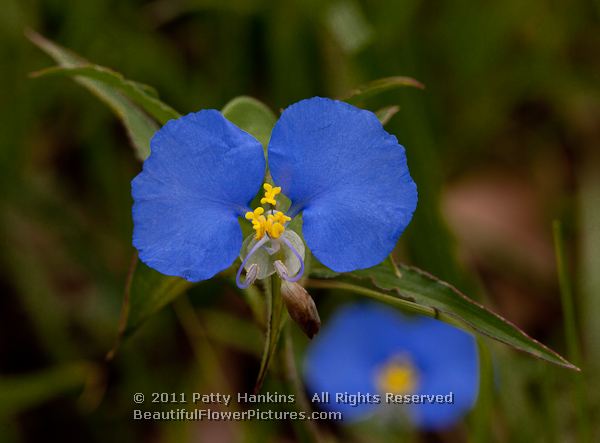 © 2011 Patty Hankins
© 2011 Patty Hankins
Erect Dayflower plants grow to about 3 feet long – and are generally seen as vines on the ground unless supported by another plant. Each flower blooms only for day, although most plants have multiple flowers that bloom 3-4 days apart.
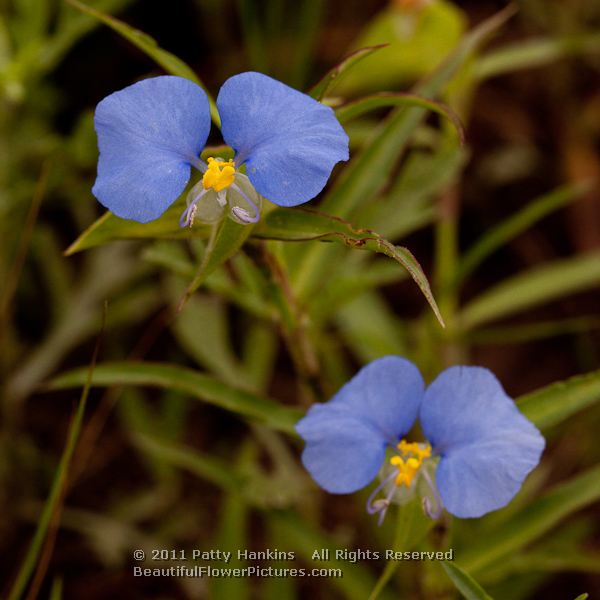
© 2011 Patty Hankins
All the dayflowers are members of the Commelina or spiderwort family. They are named for the Commelin brothers – a family of Dutch botanists. The two blue petals are said to represent the two brothers who published their work – while the white petal represents the unpublished brother.

i’m interested in getting a print – 4inches X 6inches – of the \
first or top dayflower picture. its really a great picture.
thanks for your skill.
Carol – I’m afraid none of these are available as prints at this time
Patty